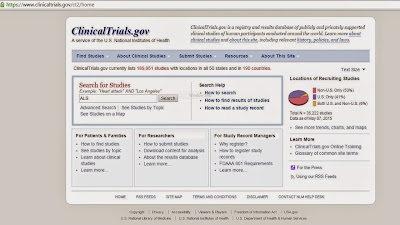“Doctors have always recognized that every patient is unique,
and doctors have always tried to tailor their treatments as best they can to
individuals. You can match a blood transfusion
to a blood type-that was an important discovery. What if matching a cancer cure to our genetic
code was just as easy, just as standard?
What if figuring out the right dose of medicine was as simple as taking
our temperature?” -President
Obama, January 30, 2015
In January
2015 during the State of the Union Address, President Obama announced his plans
to launch The White House Precision Medicine Initiative (PMI), a revolutionary
approach to the way we collect, conduct, and share disease research.
The
overarching goal of the White House PMI is to create a global warehouse of electronic
medical and science data from diverse data sources including medical records,
genomics, lifestyle and environment, and personal device/sensor data. Currently these types of data are collected
inconsistently, using different methods, and stored across organizations and
agencies such as medical clinics, hospitals, healthcare and insurance systems,
state and federal health departments and other state and federal agencies,
clinical trial locations, and private pharmaceutical and biotechnology
companies.
Those in
research are often frustrated by this reality because it takes a lot of time
and money to request data from these various sources. When data is provided it is aggregated and
does not allow the researcher to link individuals across data sources, which
would allow scientists to answer several important research questions. For example, if set up correctly such a data
warehouse would give scientists the ability to identify specific chemical or
other environmental exposures, lifestyle habits, and genetics and molecular
pathways associated with disease.
Knowing this will better enable public health to provide recommendations
for maintaining good health and preventing disease. It would allow regulatory agencies the
ability to more accurately create safe exposure limits on chemicals in our
environment. And it would allow clinical
researchers to develop tailored treatments for both common and rare diseases, and
treatments that would be effective on an individual’s specific type of disease
based on their genetics with minimal side effects.
In March
2015, the White House convened an interagency working group charged with
developing a set of privacy principles for PMI.
On July 8, the White House held a live-streaming conference to discuss
the Precision Medicine Initiative and publicize the following:
·
White
House PMI Website
·
Patients
who have benefited from precision medicine
·
Individuals
and Organizations who are supporting the PMI, known as White House Champions of
Change (#whchamps)
·
The
Interagency Working Group Proposed Privacy and Trust Principles for public
comment (due by August 7, 2015).
The
President’s PMI plan is to focus on cancer first then build in other diseases
including rare diseases such as ALS/MND.
The PMI will enlist 100,000 patients to volunteer in a pilot study that
will help the Interagency Working Group to refine their procedures and policies
required to implement the larger project.
In order for this to be a success, the White House needs patient buy-in
that they are trying to garner through these Champions of Change supports,
opportunity for public comment on proposals, and outreach through social
media.
PALS
Campaign reviewed the Precision Medicine
Initiative: Proposed Privacy and Trust Principles document. We feel that the PMI is a very ambitious
project with laudable goals, however we are gravely concerned about the inherent
data privacy issues with attempting such a large-scale, and globally accessible
project and have a number of questions.
Who will be the primary data holder(s)
and what will this data system look like? How will the White House protect
against cyber attacks and network hacking?
And how can we be assured that personal health information will be used
strictly for the research purposes intended under the PMI?
Having one
entity responsible for warehousing the data, for example the National
Institutes of Health (NIH) or Centers for Disease Control (CDC), would
hopefully insure better data accuracy and consistency, however this would pose
a greater data security risk. Look at the
recent U.S. federal data breach of 22.1 million federal employees and their family
members where the Chinese government is said to have stolen American home
addresses, social security numbers, mental and criminal background checks and
fingerprints. The size and nature of
such a cyber attack does not really increase a sense of safety when it comes to
signing over information on your full DNA profile and other personal health
information. And what about people who
work for the agencies themselves? What restricted
access protocols will be in place to insure that data breaches don’t occur
within the system?
We believe
the best architecture for a PMI data warehouse would be to operate it similarly
to how other active health reporting/surveillance systems work. Federal agencies will work with clinical
researchers, epidemiologists, patients, advocacy organizations, etc… to develop
a set core of measures and datasets that will be compiled. These protocols will be provided to states
with training. State agencies work with
the various data holders, e.g. medical clinics, hospitals, healthcare systems,
etc… to link data sources to individuals.
The database is then cleaned so that errors are corrected and each individual
is given a unique identifier known only to that agency. States send their database updates to the responsible
federal agency (e.g. CDC, NIH) who will compile state data into a national
database. In this architecture,
individual data can be linked to the various data sources, but will be de-identified
at the national level. No names, birthdates, or addresses will be associated
with the dataset that researchers analyze, however it can be linked back at the
state level using the states known unique identifier for reporting results back
to the individual. This architecture
would not 100-percent guarantee that PMI at the state level would not be
breached, but would reduce the chance of a major and severe data breach at the
federal level.
What will be the Institutional Review
Board (IRB) process and who will sit on the committee? How will the White House insure informed
consent is upheld?
Fundamental
Assumptions About the PMI Cohort (Number 3) of the PMI document states that the
intended researchers will include academic, non-profit, and for-profit
entities. It also says the scope of
research will be broad-based, not only for answering specific questions but also
for hypothesis generation. Patients and
study participants are a lot more cautious about signing over their personal
information for research given past research abuses. Two research frameworks that we recommend the
White House use include: Community-Based Participatory Research (Israel et al,
2005) and Reality-Based Research (Poupart et al, 2009). These frameworks include study participants
throughout the process, from project design to implementation and information
dissemination. What would this look
like? Patients, their caregivers, and
advocates would be included on all planning and decision committees, including
the IRB. One issue previously raised was
whether or not a personal record could be contained within the database once
that person has passed away and could no longer provide consent for release of
their records. We feel that every effort
should be made to get informed consent for records pertaining to genome
information, however in the case of death or lost to follow-up an IRB
consisting of people with the disease would be appropriate representation. All
information provided to patients and their family members including informed
consent forms and research results should be written in plain language, health
literacy, and numeracy best practices.
In keeping with an authentic partnership under CBPR and RBR frameworks,
information must be in a format that will be understandable. Common medical and scientific jargon, including
presentation of data in graphs and tables is confusing for most people. The PMI should consult with health literacy
experts to insure that forms and reports are understandable.
How will this be paid for?
Lastly, how
will this system be paid for? The large
nature of the project, multiple individuals that would need to be involved,
database and security development will not come cheap. If people must volunteer to become part of
this database then will the data collected be truly representative at a
population level?
References
Poupart, Baker,
and Red Horse (2009). Research with
American Indian communities: The value of authentic partnerships. Children
and Youth Services, 31(11): 1180-1186.
Israel, Eng,
Schultz et al (2005). Methods in
Community-Based Participatory Research for Health, 1st Edition. Jossey-Bass.
#WhiteHouse
#PrecisionMedicine #whchamps #endals #nowhiteflags #ICantWait #ALSA








